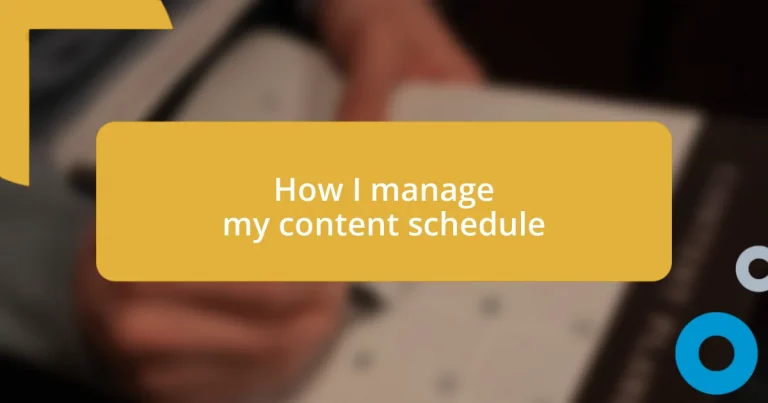Key takeaways:
- Scheduling is essential for effective content management, helping to reduce chaos and enhance creativity.
- Setting realistic content goals ensures sustained motivation and productivity while maintaining quality over quantity.
- Tracking and adjusting schedules using tools and regular reviews allow for proactive improvements and better audience engagement.
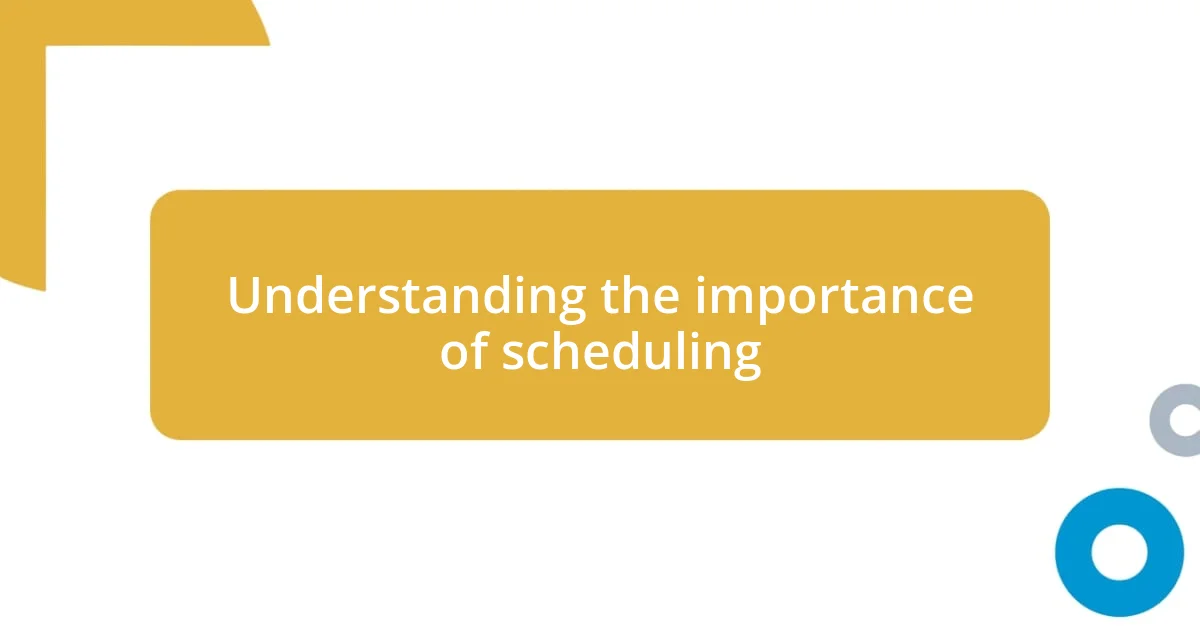
Understanding the importance of scheduling
Scheduling isn’t just a tool; it’s the backbone of my content management strategy. I’ve encountered periods of pure chaos without a structured schedule, and trust me, it was overwhelming. You might wonder, how can anyone focus on creativity when they’re constantly juggling deadlines? It’s like trying to paint a masterpiece while standing in the middle of a hurricane!
When I started prioritizing scheduling, it felt like a powerful weight lifted off my shoulders. I remember the first week where everything was planned out—each piece of content had its own time slot. I felt more in control, and my creativity flourished during that week. Doesn’t that sound refreshing?
Moreover, a well-thought-out schedule helps me stay on top of trends and seasonal topics. Recently, I realized I had timed a piece perfectly for a trending event. The satisfaction of seeing my content resonate in real-time was exhilarating. By anticipating themes and aligning them with my schedule, I can engage my audience more effectively. How could you leverage scheduling to capture your audience’s attention in the same way?

Setting realistic content goals
Setting realistic content goals is crucial for maintaining momentum in your creative process. I’ve learned that the most effective goals are the ones that align with both my capacity and my audience’s needs. There was a time when I aimed high, wanting to produce several blog posts and videos each week. Instead of feeling accomplished, I found myself stressed and burnt out. It wasn’t until I adjusted my expectations that I really started enjoying the content creation journey again.
To help set practical goals that keep you motivated, consider the following tips:
- Assess your current workload: Look at your existing commitments before setting new goals.
- Set SMART goals: Ensure your goals are Specific, Measurable, Achievable, Relevant, and Time-bound.
- Break down tasks: Divide larger projects into smaller, manageable tasks for better focus.
- Allow for flexibility: Life happens! Be ready to adapt your goals as needed.
- Prioritize quality over quantity: It’s better to produce fewer, high-quality pieces than to churn out content just for the sake of it.
When I started applying these strategies, the shift was noticeable. I felt a renewed sense of purpose; each piece I crafted became more meaningful rather than just another checkbox on my to-do list. This mindful approach not only improved my productivity but also deepened my connection with the audience I created for.
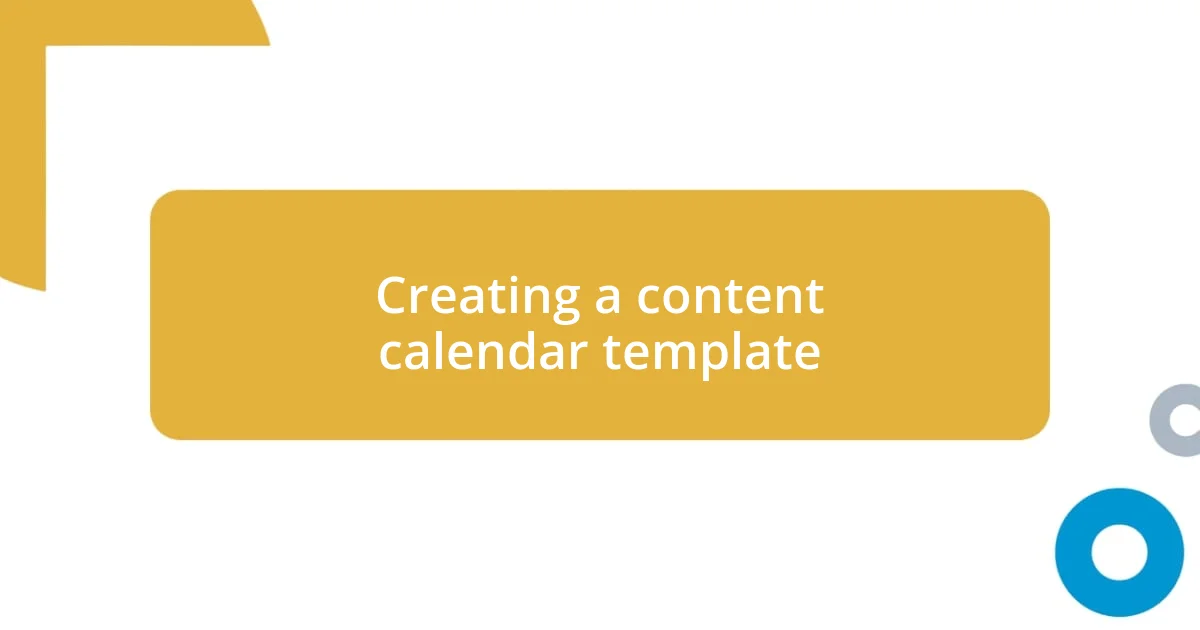
Creating a content calendar template
Creating a content calendar template can truly transform my approach to content management. I tend to start with a basic framework that lays out the different content types I want to create, such as blog posts, videos, and social media updates. By including columns for deadlines, topic ideas, and publication dates, I feel more organized. It’s like having a roadmap; I’m not wandering aimlessly through the landscape of my ideas anymore.
On my own journey, I’ve experimented with various formats. For instance, I once tried a simple Google Sheet, which was helpful but lacked visual appeal. Then, I transitioned to a digital calendar tool that allowed me to color-code different types of content. This small adjustment made a huge difference. Each time I look at the calendar, the vibrant colors spark inspiration, motivating me to dive into my work. Have you ever felt a surge of creativity just by tweaking the way you visualize your tasks?
Here’s a comparison of different content calendar templates to help illustrate what works for me:
| Template Type | Features |
|---|---|
| Monthly Calendar | View all content at once; great for seasonal planning. |
| Weekly Planner | Focus on immediate content; helps manage weekly tasks effectively. |
| Content Pipeline | Track stages of content creation; ideal for team collaboration. |
| Editorial Calendar | Integrates deadlines with content topics; keeps track of scheduled posts. |
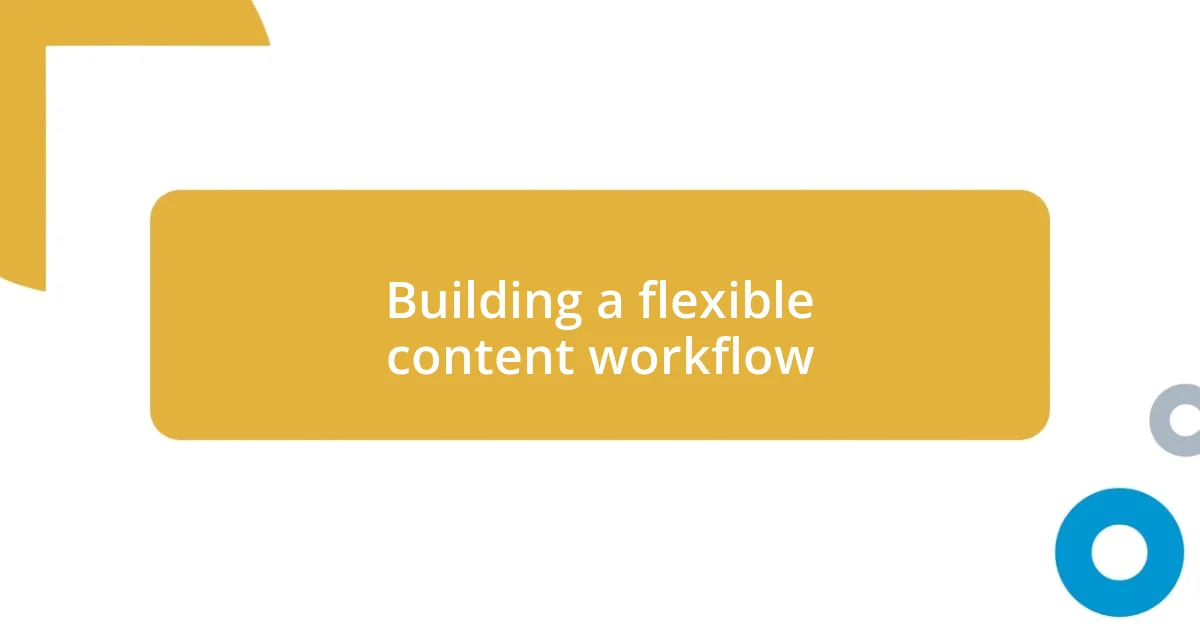
Building a flexible content workflow
Building a flexible content workflow has been a game-changer for me. Early on, I adhered strictly to rigid schedules, which left little room for creativity. I still remember a week when a last-minute opportunity to collaborate arose, but my inflexible workflow forced me to decline. That experience taught me the importance of keeping my schedule adaptable so I can seize opportunities and still meet my goals.
For me, a key strategy has been to incorporate buffer time into my workflow. This allows me to handle unexpected changes without feeling overwhelmed. I make it a habit to schedule a couple of extra hours each week dedicated solely to brainstorming new ideas or addressing unforeseen challenges. How often have you found yourself scrambling to meet a deadline because life threw you a curveball? By proactively allowing time for adjustments, I can maintain my focus and creativity while ensuring that my workload stays manageable.
Additionally, I’ve learned to embrace tools that facilitate this flexibility. For instance, using project management software has helped me keep track of changes quickly. If a blog post needs to shift from next week to the following month due to unforeseen circumstances, I can easily drag and drop it in my digital workspace. It feels liberating! When was the last time you tweaked your approach and felt that weight lift off your shoulders? Building a flexible workflow not only enhances my productivity but also allows my creative juices to flow more freely.
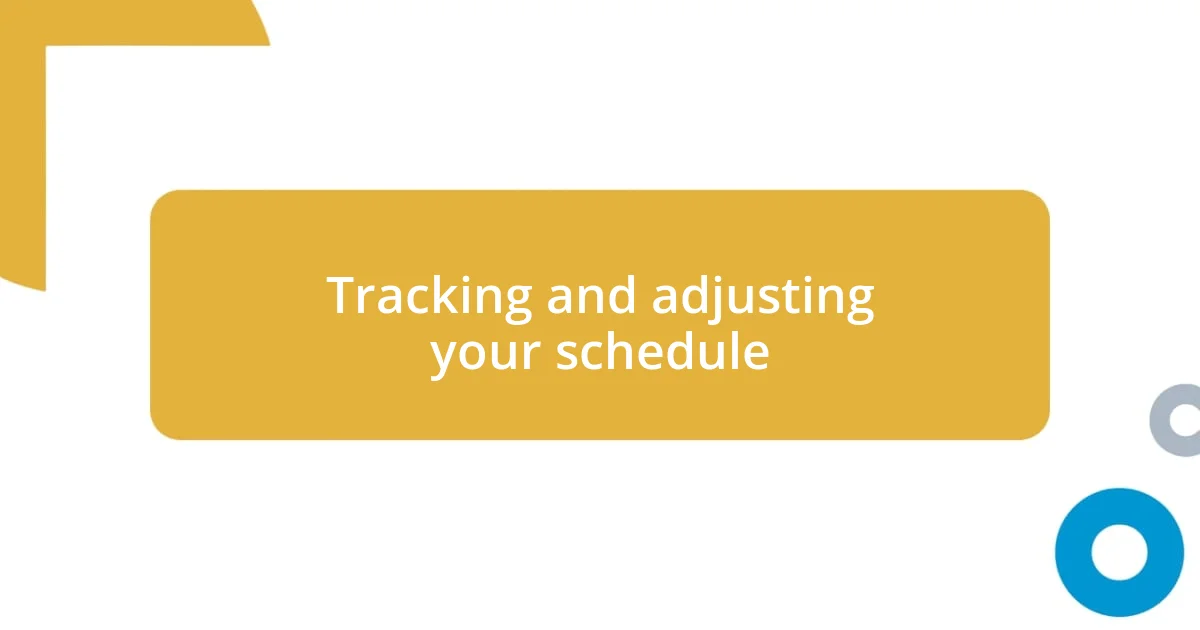
Tracking and adjusting your schedule
Tracking my content schedule is crucial for me to stay on top of my game. I often rely on tools like Trello or Asana, which allow me to visualize my tasks and monitor progress. One experience that stands out was when I noticed a consistent delay in my blog post releases. After digging into my tracking, I realized I was underestimating the time required for editing. Have you ever felt like you were running in circles? By adjusting the schedule to allocate more time for revisions, I turned things around.
Adjusting my schedule isn’t just about numbers; it’s about understanding what works best for me. A while back, I experimented with a ‘time audit’ technique, where I logged how long each task took over two weeks. This gave me solid data to see where I was thriving and where I was wasting time. It was enlightening! Since then, I’ve been able to tweak my approach, ensuring I’m not just busy but productive. How often do we think we’re grinding but aren’t truly advancing?
It’s essential to remain proactive and not reactive. For instance, I often review my content schedule every Friday. This ritual helps me assess what went well during the week and what didn’t. Just last month, I found that my audience responded much better to video content rather than written posts. I made a quick pivot, and that adjustment led to increased engagement. How do you track your successes and setbacks? Embracing this iterative process keeps my content fresh and relevant, allowing me to connect more authentically with my audience.












